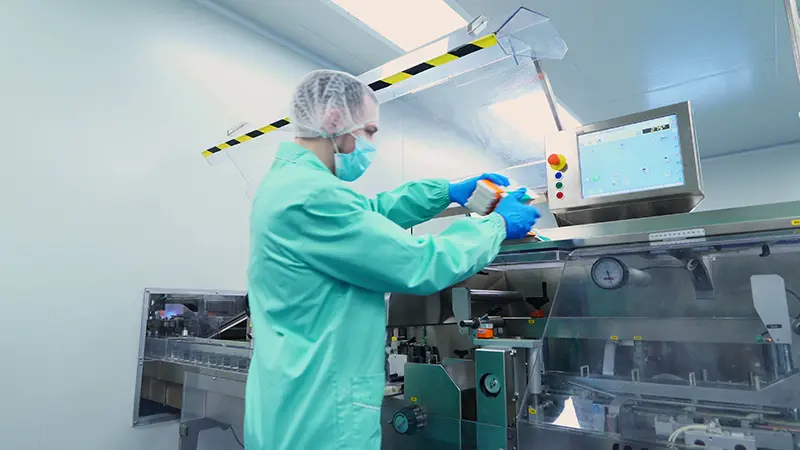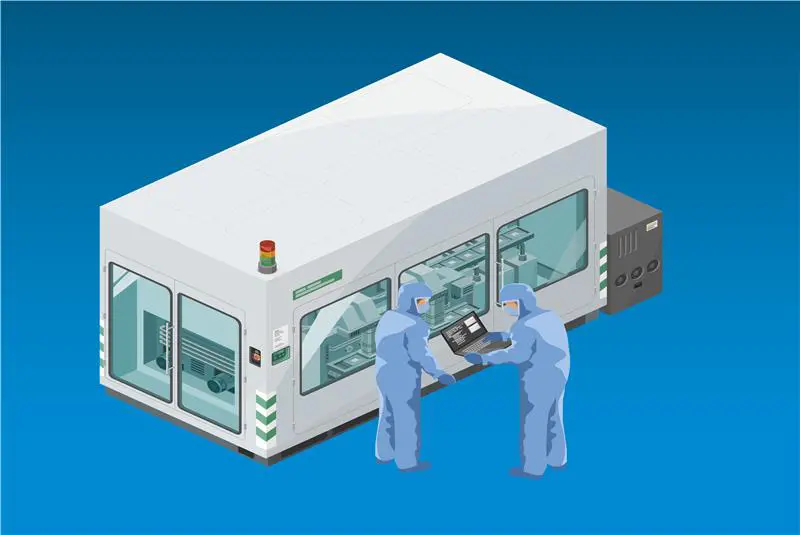When it comes to maintaining the integrity of cleanroom environments, human contamination remains the single greatest threat. In a recent webinar featuring Patricia Sitek, a leading biotechnologist and cleanroom consultant, and Jason Kelly, Director of Applications at Lighthouse, industry professionals gathered to discuss the critical role of personal hygiene and behavior in contamination control.
Here’s what you need to know to keep your cleanroom truly clean – To control contamination, cleanroom personnel must adopt behaviors based on ISO 14644 standards and industry-proven protocols.

Move with Purpose
All movement should be slow, deliberate, and necessary.
- Avoid rushing or sharp gestures.
- Walk with arms close to your body.
- Pivot your whole body instead of twisting.
- Plan tasks ahead to reduce backtracking.
Limit Door Usage
Opening and closing doors quickly—or leaving them open—disrupts pressurization and airflow, allowing particles to spread.
- Use airlocks and pass-throughs properly.
- Keep doors closed at all times unless actively entering or exiting.
- Put pressure sensor time alarms into action to avoid conversations between doors and allowing potential contamination to enter from a dirtier zone.
Hands Off
Do not:
- Support materials against your body.
- Let sleeves, cords, or tools trail across surfaces.
- Touch your face, scratch skin, or wipe sweat inside the cleanroom.
Silence Is Cleanliness
Talking releases saliva and fine droplets, which can contaminate nearby surfaces.
- Minimize conversation while in the cleanroom.
- Never eat, drink, or chew gum in controlled areas.
Master Gowning and Hygiene
What you wear — and how you wear it — matters.
- Follow gowning procedures exactly, including proper donning/de-gowning.
- Use only cleanroom-approved garments.
- Avoid cosmetics, perfumes, lotions, and deodorants that introduce chemicals and particles.
- Inspect garments before entry for damage or shedding.
- Validate the gowning procedure of each employee entering the cleanroom.
Avoid Personal Habits
Any grooming, nose blowing, or skin contact should be handled outside the cleanroom. These behaviors are significant contamination risks and can undo the protection offered by cleanroom garments.
Designing Cleanrooms for Contamination Control
Reducing human movement also comes down to smart cleanroom layout and process design:
- Place tools and materials within reach to prevent unnecessary walking.
- Organize workflows to reduce cross-traffic and backtracking.
- Use motion-reducing features like mobile carts, pass-through cabinets, and visual cues for movement zones.
- Use airflow visualization to ensure operators in work positions are not contributing to contamination into critically controlled zones.
- Control the number of operators into a room and do not exceed the max allowable people inside the rooms.
The Role of Training and Awareness

As Patricia Sitek pointed out during the webinar, training is essential—not just in what to do, but why it matters. While industries like pharma often have rigorous standards and audits, others (like electronics or medical devices) may lack harmonized guidance. This inconsistency makes employee awareness even more critical.
Key Training Topics:
- How movement generates particles
- Proper gowning and hygiene protocols
- Behavior expectations inside controlled zones
- Real-time feedback using particle counters to reinforce good habits
Cleanroom Worker Tips at a Glance
Think before you move
Walk slowly and smoothly
Minimize talking
Don’t touch your face or clothing
Keep doors closed
Follow gowning protocols
Avoid unnecessary re-entry
Conclusion: Every Movement Counts
Cleanroom contamination control isn’t just about HEPA filters and clean surfaces—it’s about people. Human behavior, hygiene, and movement can make or break a contamination strategy. By following best practices rooted in ISO 14644 and emphasizing training, awareness, and smart facility design, cleanroom teams can reduce contamination risk and boost operational performance.
At the end of the day, the cleanest cleanroom is one where every action is intentional, every movement is minimal, and every worker understands their role in maintaining control.


